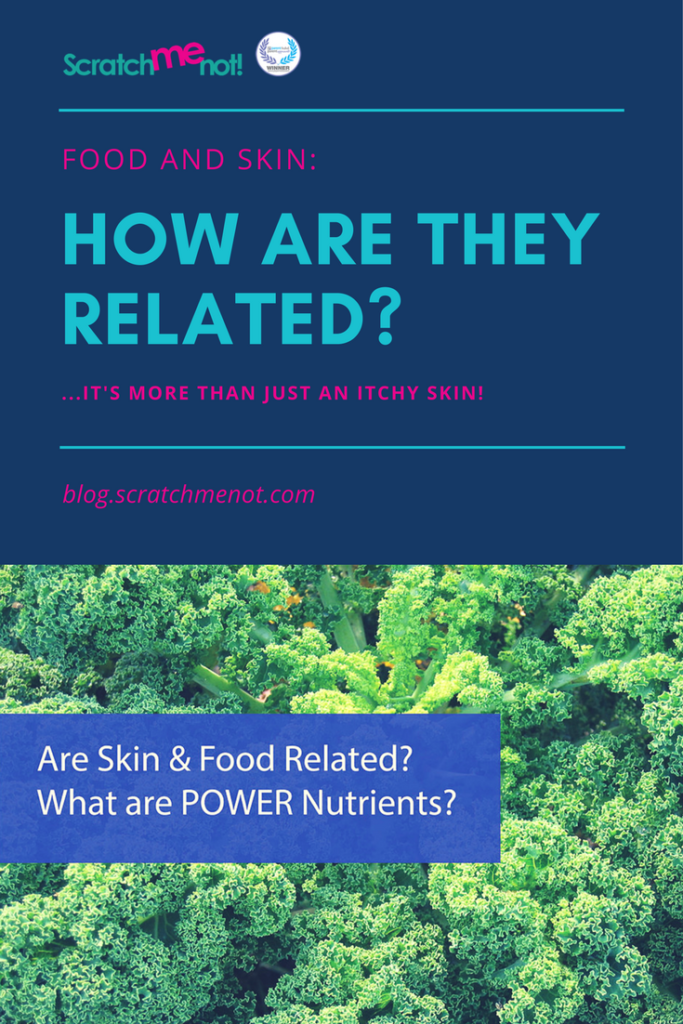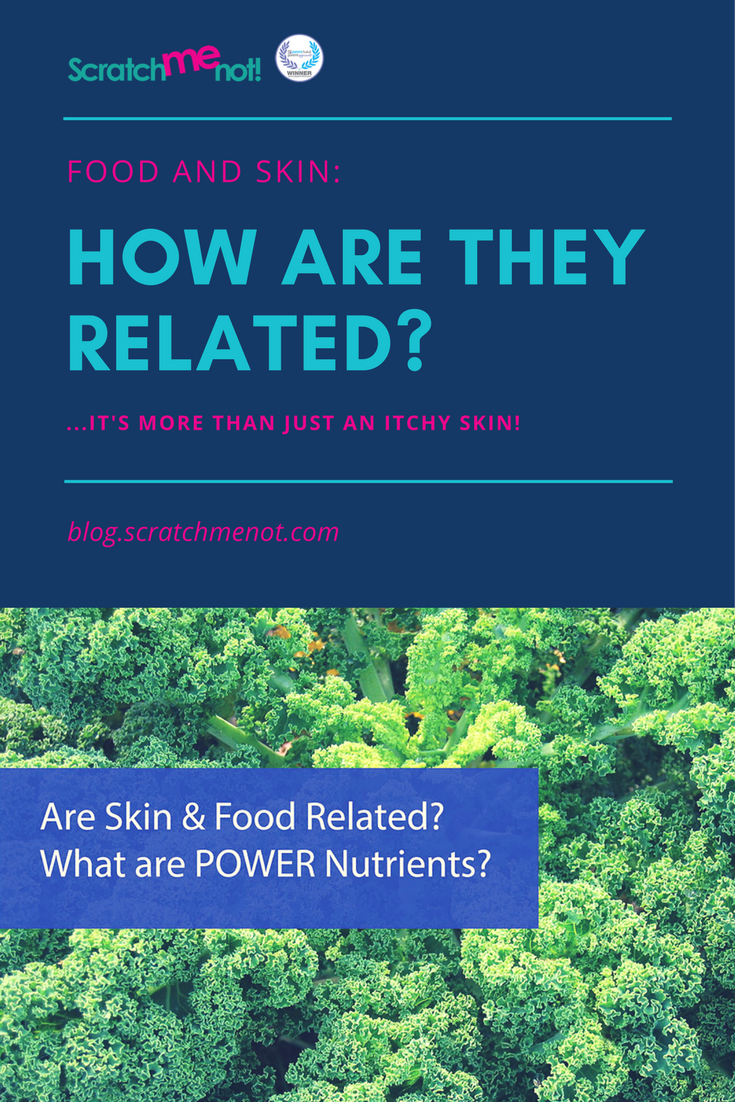Impact of Foods on Skin
Studies directly link foods to skin are limited, yet we know we, and our skin, are affected by what we eat. I can easily see a direct relationship between food and skin when my son eats dairy. Within minutes, a red rash appears letting me know his body disagrees with dairy.
All over the internet, books and magazines, experts encourage us to eat certain foods for glowing skin or for a healthy complexion, but what we want to focus on are nutrients & foods that help repair skin quickly and reduce skin inflammation. This is especially important for children with eczema prone skin since there’s an underlying inflammatory concern. Here’s a quick list of power nutrients to make sure your child received daily.
Power Nutrients
1) Omega-3
Omega-3 fatty acids have anti-inflammatory properties which work to improve skin hydration. It is also associated with protection against sun damage and improvement of skin disorders like eczema, acne and psoriasis. Another benefit of Omega-3 is the antimicrobial property that promotes wound healing. Omega-3 has been studied and known to maintain our skin’s stratum corneum barrier.
Depending on the child’s preference and/or allergy (if any), parents can choose from these omega-3 rich foods:
- fish (salmon, sardines and mackerel),
- seeds (flaxseeds, chia seeds – either as oil or made into smoothies) OR
- nuts (almonds, pistachios and walnuts). Among the studies relating foods to eczema, omega-3 is one of the few with studies to show benefits for eczema skin.
- If you prefer a supplement we love the one’s from Nordic Children’s Omegas
or Nordic’s Children’s DHA
2) Antioxidants
There are many vegetables that are rich in antioxidants. Antioxidants reduce free radicals that can come from sun exposure, exposure to environmental pollutants, consumption of pro-inflammatory foods and stress. The good thing about many of these antioxidant-rich vegetables are that they also contain more than one type of vitamins. For instance, purple-colored vegetables (cabbage) pack more antocyanins which are anti-inflammatory while beta-carotene rich ones like carrots and sweet potatoes have vitamins A, C and E which are anti-inflammatory and help to retain skin moisture. And blueberries are known to have high levels on antioxidants too.
A bit about free radicals courtesy of HealthyCheckSystems.com:
“Normally, bonds don.t split in a way that leaves a molecule with an odd, unpaired electron. But when weak bonds split, free radicals are formed. Free radicals are very unstable and react quickly with other compounds, trying to capture the needed electron to gain stability. Generally, free radicals attack the nearest stable molecule, “stealing” its electron. When the “attacked” molecule loses its electron, it becomes a free radical itself, beginning a chain reaction. Once the process is started, it can cascade, finally resulting in the disruption of a living cell.
Normally, the body can handle free radicals, but if antioxidants are unavailable, or if the free-radical production becomes excessive, damage can occur. Of particular importance is that free radical damage accumulates with age.” -HealthyCheckSystems.com
3) Vitamin A
Vitamin A helps to reduce over-production of dead cells and sebum, therefore making it a good choice for those prone to acne or clogging of pores. It is also essential for skin and bone growth. However, check with your OBGYN and/or healthcare provider before taking vitamin A supplements as it has been linked to atopy and wheezing in children. Many beta-carotene rich vegetables are also rich in Vitamin A.
4) Vitamin E
Vitamin E is known to protect the skin against free radicals which excessive oxidative stress. Vitamin E also helps with skin moisture retention. Almonds, avocado, broccoli and flaxseeds contain Vitamin E.
5) Vitamin C
Vitamin C helps with production of collagen, protect against sun damage (anti-oxidative) and improve skin healing, including pigmentation problems. Eczema skin is generally dry and lacking in skin oil and moisture, and thus benefits from Vitamin C. Vitamin-C rich fruits include kiwis, strawberries, grapefruits, berries, watermelon and oranges.
6) Folate
The folate in green leafy vegetables are linked to cell repair and reduction of cancerous cells. Two vegetables that deserve special mention are spinach and kale – they are super foods! Kale is rich in vitamins A, B6, C and K and omega-3. Spinach is high in vitamins B, C and E, contain many minerals and omega-3.
Considering the information above, it’s not surprising that in a study of more than 500,000 children in over 50 countries, there is a link between less severe asthma, hay fever and eczema when three or more weekly servings of fruits and vegetables has been consumed. Conversely, the study linked fast food to an increased risk in severity of the above conditions.
Foods on Skin
One word about the impact of foods on our skin – it is not limited to eating the food. Food is in the air, and that’s why we smell it. Being in the air means that the food can also settle on our skin. Should the food comes into contact with the skin, and one is allergic to the food, rashes can also be triggered. Moreover, if a food is allowed to stay on the skin for too long, the skin can also be sensitized to it – meaning the next time the same food is in contact with the skin, skin rash may appear. Increasingly researchers and dermatologists are recognizing the outside-in hypothesis, whereby the foods that children come into contact with could potentially set off an allergic response. It is therefore important to protect our children’s skin, keep it moisturized and keep them from scratching their skin!


